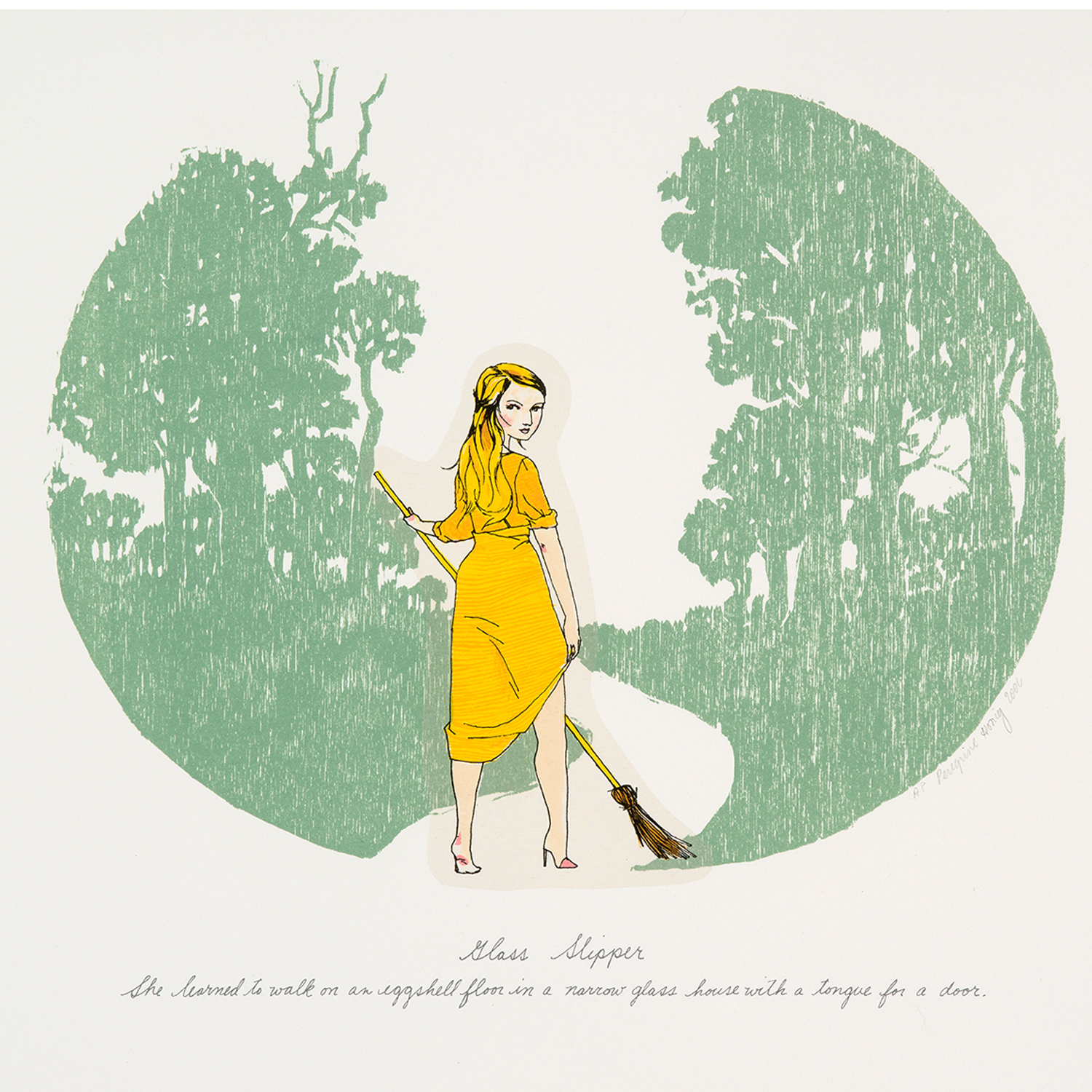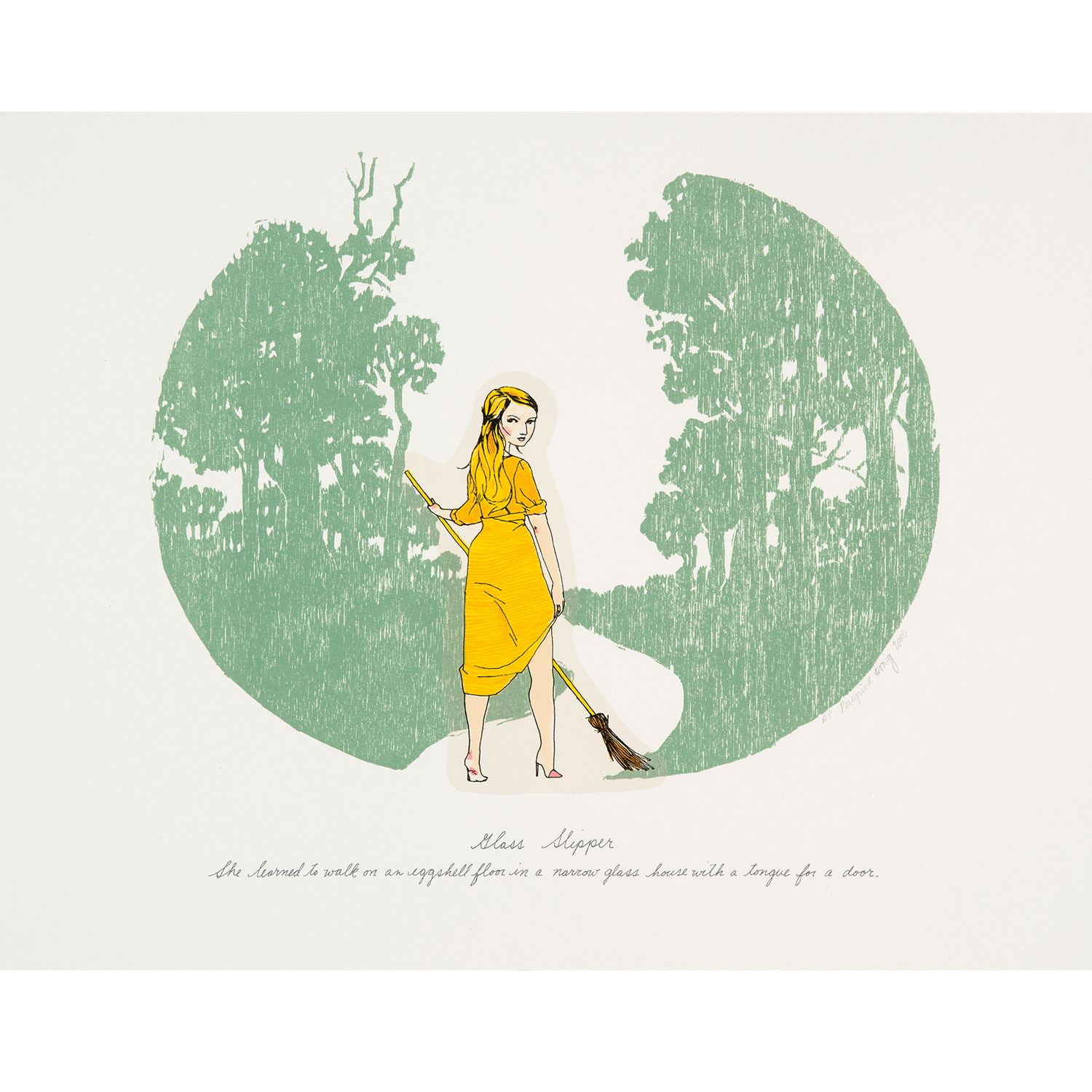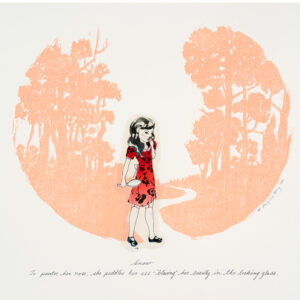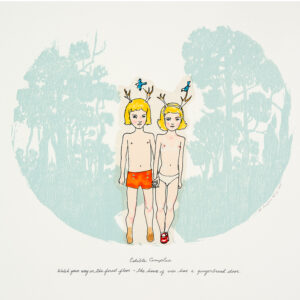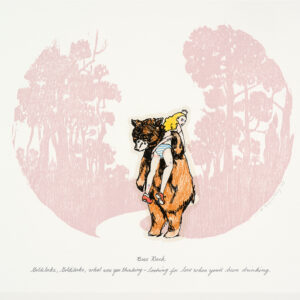Description
Peregrine Honig – Glass Slipper, 2006 is in the following COLLECTIONS:
- Ball State University
- (Marianna Kistler) Beach Museum, Art of Kansas State University
- Belger Collection
- Davis Museum
- Nelson-Atkins Museum of Art (16.2022.22)
- New York Public Library
- Spencer Museum of Art, University of Kansas (2009.0128.05)
- Tweed Museum of Art
- University of Oregon
—————————–
RESOURCES:
“The ethics of oral history is an inexhaustible resort for pop culture. From Peter and the Wolf to the outline of contemporary exploitation, the recounting of dark motives and inappropriate behavior is an intimate sitcom. Storytelling is sourced out and animated for consumption. Commercial characters may allude to their antiseptic roots, but the seed is never planted. Cinderella does not bleed for Disney, Snow White is never corseted for Coca Cola, and princes do not emerge from stabbed bears. Father Gander stings with the switch of parental and animal gender. Gentrification of fear allows for more self-deprecating themes to thrive. The crowd turns its focus to prostitution, incest, captivation, and other social calamities when an imbalance of power proves to be organized with intention.
This set is a three year project based on reinvented children’s stories. The piece is formal. Each situation is a fragile tragedy placed gently in a forced set. The “Forest” shifts through seasons of light to reveal the possible lives of familiar situations. Red Riding Hood is shrouded in Turkish brocade, burdened by the gestation of her loveless matrimony. Goldilocks is carried away by the consequences of poor decisions. Snow White is an addict and Hansel and Gretel lean forward, Arbus’s angels, barely obscuring their disarming bond. Rapunzel assumes a stance of defiant sexuality, a cloistered rebel cutting her hair to the quick. Cinderella watches her back, anticipating her own happy ending. Fairytales are posed to prepare tender ears for uncomfortable situations and resolve them to champion fear. Father Gander represents edited moments of adult projection and human conflict.”
– Peregrine Honig –

